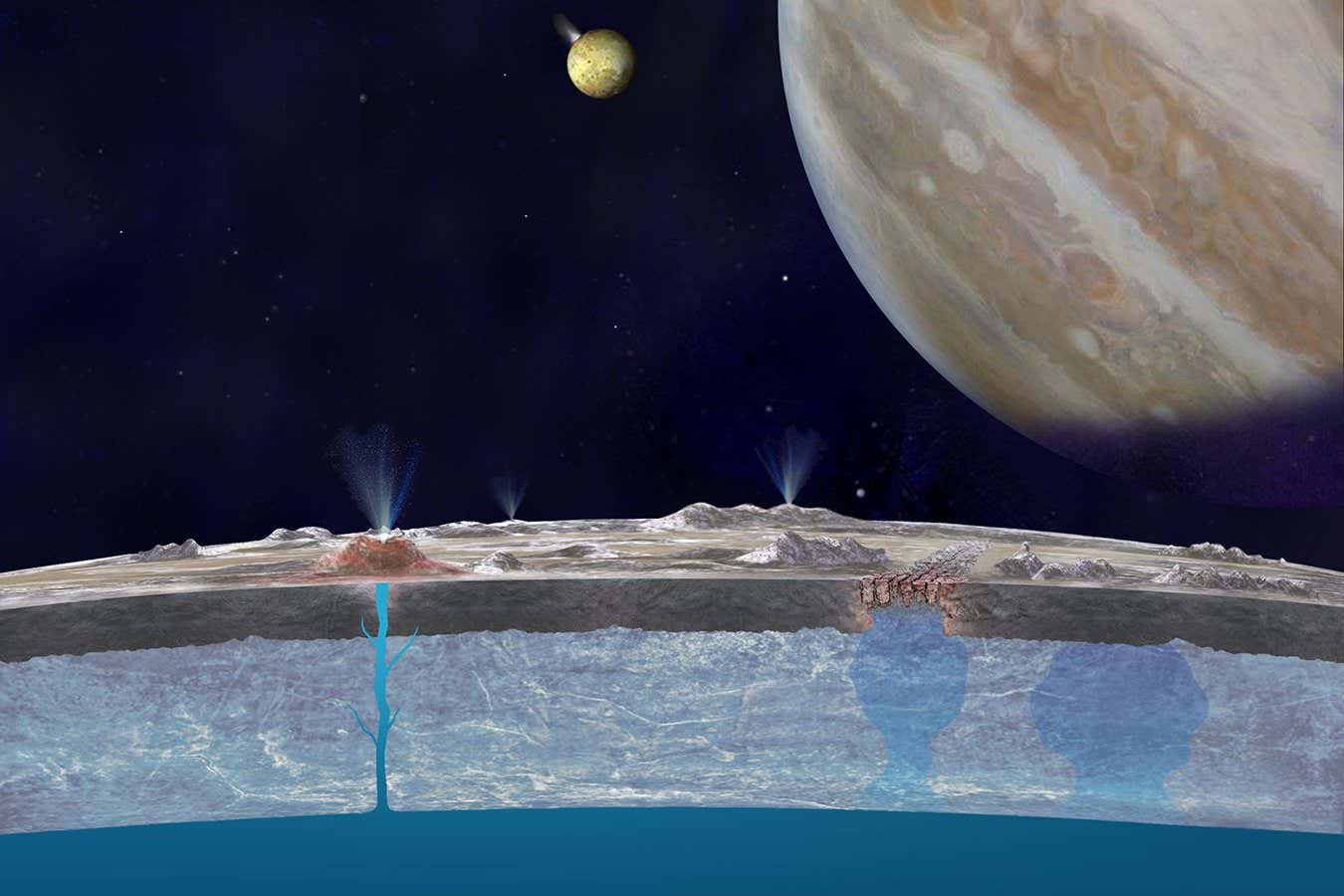Artist’s impression of Europa (foreground) with Jupiter to the right and the moon Io in the distance.
NASA/JPL-Caltech
The underground ocean inside Jupiter’s moon Europa may contain carbon dioxide (CO2), according to observations made with the James Webb Space Telescope (JWST). This discovery is significant because carbon is essential for life, suggesting the presence of habitable conditions beneath Europa’s icy shell.
Two independent research groups analyzed the JWST observations and reached the same conclusion. Carbon dioxide appears to be seeping up to the icy surface of Europa. The highest concentration of CO2 was found in an area called Tara Regio, characterized by chaos terrain – a jumbled region with pits, ridges, cracks, and domes. Tara Regio is considered geologically young, shaped by interactions with the underground ocean over the past several million years.
“The strongest signal is coming from the chaos terrain, which is geologically fresher than other areas of Europa,” explains Geronimo Villanueva at NASA’s Goddard Space Flight Center. “That means it’s highly likely that this material is new and it has to come from the interior.” The concentration of carbon dioxide was also elevated in other regions of chaos terrain, further supporting the idea of an internal source rather than external sources such as comets.
This discovery is promising for the potential existence of life beneath Europa’s icy shell since all known forms of life require carbon as a building block for organic molecules. Samantha Trumbo at Cornell University states, “Carbon is a biologically crucial element, so it’s important to figure out how it got to Europa, how much of it is there, and in what form it’s there.”
The JWST has only observed Europa once so far, with plans for three more views. With these additional observations, scientists hope to obtain a more comprehensive understanding of Europa’s surface, providing valuable insights into the composition and potential habitability of its subsurface oceans.
Journal references: Science, DOI:10.1126/science.adg4270, DOI:10.1126/science.adg4155








